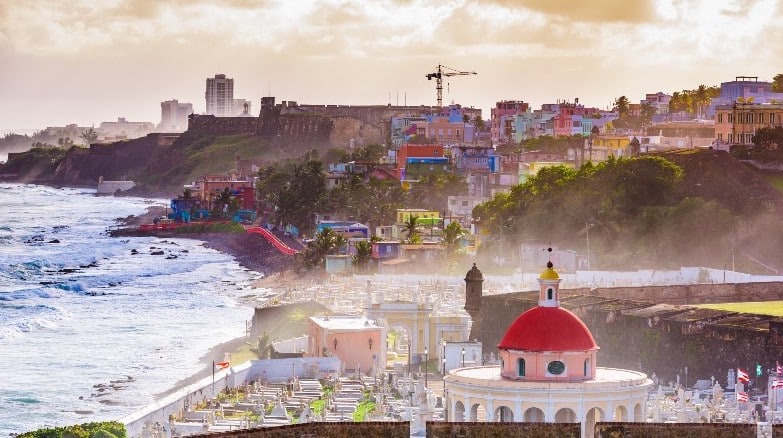Musician Bad Bunny recently made history when he became the first exclusively Spanish performing artist to be nominated for Album of the Year at the 2023 Grammys. But what is equally noteworthy are the songs he chose to open the ceremony.
As someone who quite frequently listens to Bad Bunny songs whether they come up on Spotify, the radio, or the local brunch spot, I know that the songs he performed, “El Apagón” and “Después de la Playa”, although well liked, are not his most popular nor the most mainstream. However, it doesn’t surprise me that these were the chosen songs for a night when thousands, if not millions, were watching and listening.
Reggaeton—a music style that originated in Puerto Rico with influences of Reggae en Español from Panama, hip hop, and other styles—has long served as a political and social platform, not just for Bad Bunny but for earlier reggaeton icons, such as Tego Calderón and Calle 13. That’s why opening such a prominent music awards ceremony with “El Apagón”, which translates to “The Blackout,” a song that calls out the current development issues in Puerto Rico, made sense.
As a Washington Post article put it, “Bad Bunny wants you to stop ignoring Puerto Rico”. “El Apagón” is a song that focuses on two prominent issues on the island: lack of reliable electricity and displacement. Yet, while the Grammys provided a few minutes to shine a spotlight on these issues, it wasn’t enough time to explain exactly WHY these are issues; and what innovators, entrepreneurs, and policymakers can do to help address them. Thankfully, Clayton Christensen’s theories, and this piece, can attempt to do just that.
On electricity
The music video for “El Apagón” is a 22-minute documentary that highlights the two aforementioned issues, one of them being native Puerto Ricans’ response to the privatization of their electrical grid. At first, residents welcomed the change, hoping that the private company that took charge in 2021, Luma Energy LLC, would provide them with more reliable electricity.
However, since Luma took over, grid power outages on the island have lengthened and customers’ rates have increased several times. Understandably, Puerto Ricans are upset.
So what is the right solution?
Puerto Rico Governor Pedro Pierluisi previously said that ending the Luma deal was out of the question because it would disrupt service and delay grid improvements. So, people on the island are turning to alternative solutions whether those be generators or solar systems.
As I’ve previously written, within mass nonconsumption of electricity lies an immense opportunity for market-creation—solar-powered systems are a sustainable solution to the lack of reliable electricity. But rather than simply advancing this possible solution, in Puerto Rico’s case, sustainable solutions paired with pull strategies would work best toward successful development.
Pull strategies originate from innovators on the ground. They pull in specific resources such as infrastructure when needed. And they have an investigative approach to problem solving, meaning targeted market demands will be specific to that particular region. Especially for Puerto Rico, where local populations are still in major recovery from storms and compounding crises that contribute to a perpetual state of insecurity, targeted solutions that will build and sustain much needed infrastructure are key.
Luma Chief Executive Wayne Stensby said the company didn’t anticipate the extent of the problems before it began the extensive work needed to rebuild the aging grid. Hindsight is 20/20, but employing pull strategies would have helped ease some of their current problems.
On displacement
The other issue that “El Apagón” tackles is the displacement of longtime residents and blocked access to public beaches due to increasing real estate development.
A bridge in the song translates to “I don’t want to leave here. This is my beach. This is my land.” The music video/documentary, with a title that translates to “The Blackout (People Live Here),” voices native Puerto Ricans’ worries that outside investors are coming in with a “colonizer mentality” by coming in, tearing down public housing, and building luxury condominiums that cater to the wealthy. Or, lured in by significant tax breaks, they buy out existing apartment complexes, then rent them for nightly prices that tourists can afford, but that are over half of what longtime residents paid per month. What the locals denounce is that the tourism economy isn’t benefiting local jobs (as frequently advertised), but instead benefiting foreign owners and pushing locals out.
Meanwhile, the government argues that the people can’t stop land development because it’s renovating communities that have been in shambles for decades, and ultimately spurring the economy.
One of the important theories here at the Clayton Christensen Institute, is the theory of Jobs to Be Done. It’s a framework to think about customer behavior and priorities, breaking them down by framing consumption as “jobs” to be accomplished. The job architecture is made up of three levels: the job itself, the experiences in purchase, and the integration of resources.
When approaching solutions to spur the Puerto Rican economy, it would be beneficial to keep Puerto Rican behavior and priorities in mind, and to think of these priorities as “jobs”. Creating sustainable economic growth might be a shared priority of the government and the Puerto Rican natives, but when crafting solutions to create growth that will be welcome and sustainable, innovators, policymakers, and developers must take into account the experiences they are creating and the resources they are utilizing, or taking away.
Bad Bunny opened the Grammys with “El Apagón” and then transitioned to “Después de la Playa,” which is a celebration of Latino culture with its beats of merengue. That second song crosses genres and borders, and although it’s the song that the media wonderfully emphasized “got Taylor Swift dancing” (as a Swiftie at heart, I rejoiced too), that’s not the song nor the story to focus on here. The Grammys are a platform, music is a platform, and business theory can be too…at least, for those who are truly listening.



